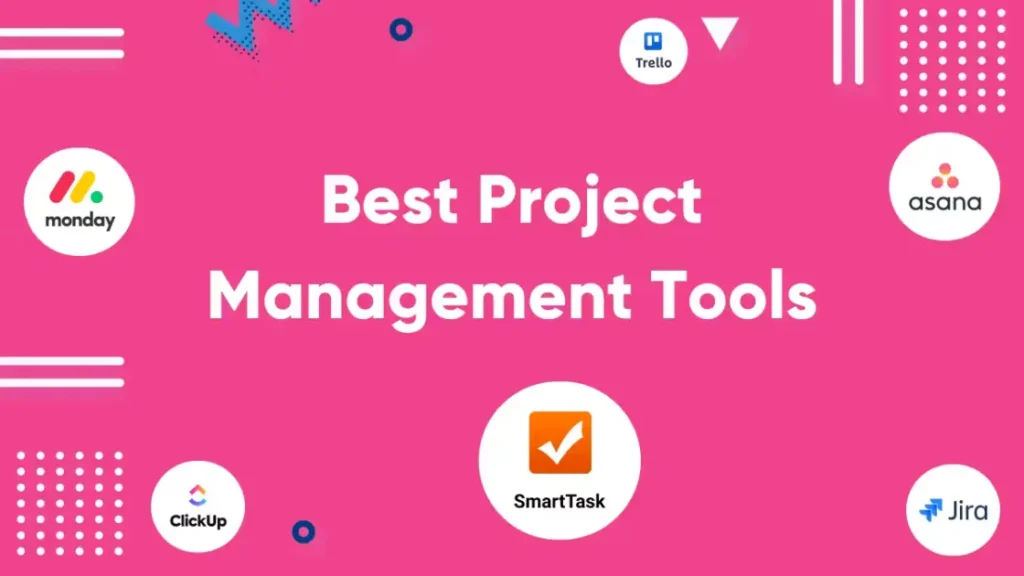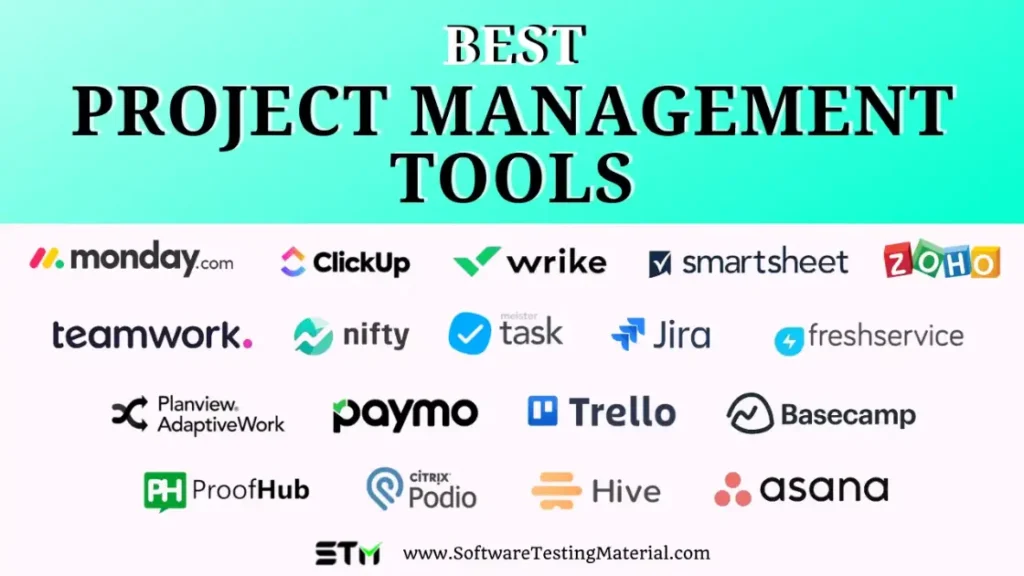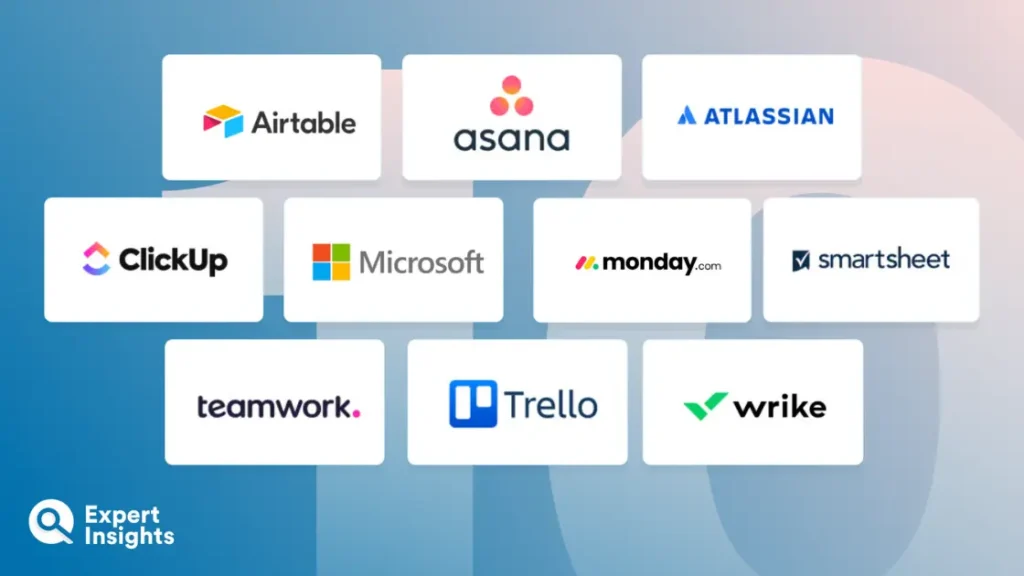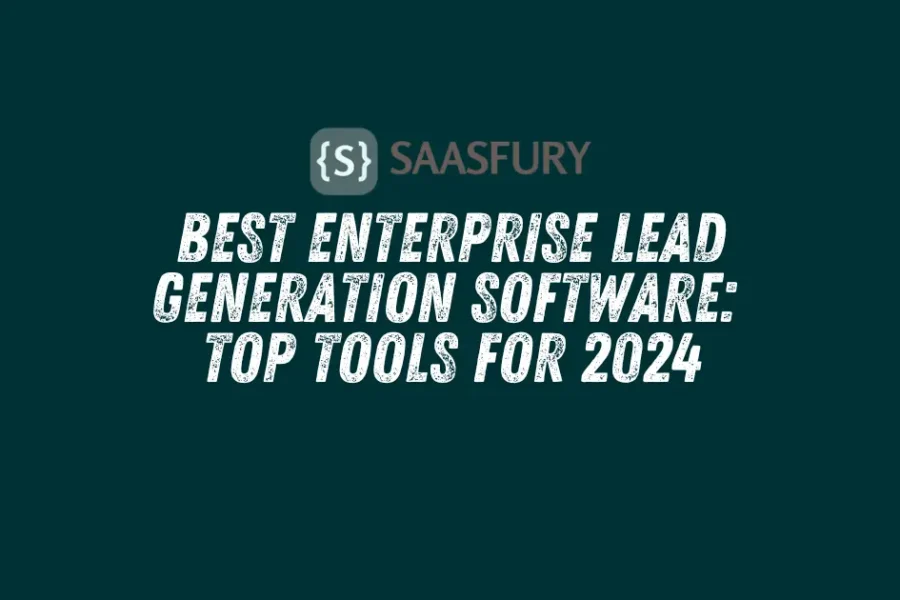Project management tools are software applications designed to assist in planning, executing, and closing projects. These tools help manage tasks, resources, and timelines efficiently.
Project management tools streamline workflows and improve team collaboration. They offer features like task assignment, progress tracking, and deadline management. Teams can communicate effectively and share documents within the platform. Popular tools include Trello, Asana, and Microsoft Project. They provide dashboards for visual project tracking and Gantt charts for timeline visualization.
Integrations with other software enhance their functionality. By using these tools, project managers ensure that projects are completed on time and within budget. These tools are essential for maintaining organization and accountability in any project.
Table of Contents

Credit: www.smarttask.io
Key Features
Project management tools are essential for managing tasks and teams. They have various features that make managing projects easier. Below are some key features you should know about.
Task Management
Task management features help in organizing and tracking tasks. These features usually include:
- Task Creation: Easily create and assign tasks to team members.
- Deadlines: Set deadlines to ensure timely completion.
- Prioritization: Mark tasks as high, medium, or low priority.
- Progress Tracking: Monitor the progress of each task.
Collaboration and Communication
Effective collaboration and communication are crucial in project management. These tools often come with features like:
- Chat: Real-time messaging for quick conversations.
- File Sharing: Share important documents easily.
- Comments: Leave comments on tasks for clarity.
- Notifications: Get notified about updates and deadlines.
These key features make project management tools indispensable. They help streamline work and improve productivity. Always look for these features in a project management tool.
Benefits
Project management tools offer numerous benefits that can transform the way teams work. These tools enhance efficiency, productivity, and resource allocation. Let’s explore these benefits in detail.
Efficiency and Productivity
Project management tools improve efficiency and productivity by automating tasks. They help in tracking progress, setting deadlines, and managing schedules. With these tools, teams can collaborate better, reducing miscommunication. They also provide real-time updates, keeping everyone informed. This ensures that projects are completed on time.
Better Resource Allocation
Another major benefit is better resource allocation. These tools help in identifying resource availability and allocating them wisely. Teams can see who is available and assign tasks accordingly. This prevents overburdening of any single team member. It also helps in managing budgets and reducing costs.
Here is a comparison of features that aid in resource allocation:
| Feature | Benefit |
|---|---|
| Task Assignment | Ensures tasks are distributed evenly |
| Time Tracking | Helps in monitoring time spent on tasks |
| Budget Management | Assists in keeping projects within budget |
Project management tools provide a centralized platform for all project-related activities. This simplifies the process of managing projects from inception to completion.
Choosing the Right Tool
Choosing the appropriate project management tool can significantly transform the process. The correct tool boosts productivity and enhances team collaboration. It is crucial to evaluate various factors before making a decision.
Assessing Team Needs
Understanding your team’s requirements is the first step. Different teams have different needs. Some need robust communication features. Others might need advanced task tracking.
- Identify the key features your team needs.
- Evaluate the tool’s usability and interface.
- Check compatibility with existing software.
Gather feedback from team members. This ensures everyone is on board with the new tool. Ease of use is a critical factor in adoption.
Budget Considerations
Budget plays a significant role in the selection process. You need to balance cost and features.
| Plan Type | Cost | Features |
|---|---|---|
| Free | $0 | Basic features, limited users |
| Standard | $10/user/month | Advanced features, more users |
| Premium | $20/user/month | All features, unlimited users |
Choose a tool that fits your budget. Ensure it meets your essential features. Remember, the most expensive tool isn’t always the best. Look for value, not just cost.
Top 10 Project Management Tools
Project management tools help teams work together. These tools keep projects on track. Here, we list the top 10 project management tools. Each tool has unique features and benefits.
1. Trello
Features:
- Drag-and-drop interface
- Customizable boards
- Integration with other tools
Benefits:
- Easy to use
- Boosts team collaboration
- Improves task tracking
2. Asana
Features:
- Task assignments
- Due dates and timelines
- Project templates
Benefits:
- Increases productivity
- Enhances project visibility
- Saves time with templates
3. Wrike
Features:
- Time tracking and reporting
- Interactive Gantt charts
- Workload management
Benefits:
- Comprehensive project planning capabilities
- Facilitates team collaboration
- Flexible interface tailored to team needs.
4. Monday.com
Features:
- Customizable workflows
- Visual project tracking dashboards
- Time tracking and automation
Benefits:
- Improves team communication
- Enhances project transparency
- Simplifies task management
5. ClickUp
Features:
- Task management with priorities and statuses
- Goal tracking and time estimates
- Document sharing and collaboration tools
Benefits:
- All-in-one platform for productivity
- Increases accountability among team members
- Customizable views to suit different workflows
6. Smartsheet
Features:
- Spreadsheet-like interface for project management
- Automated workflows and alerts
- Resource management tools
Benefits:
- Familiar format for Excel users
- Supports complex project scenarios
- Enhances visibility into project progress
7. Jira
Features:
- Agile project management capabilities
- Customizable scrum boards
- Advanced reporting and analytics
Benefits:
- Ideal for software development teams
- Facilitates sprint planning and tracking
- Integrates well with other development tools.
8. Zoho Projects
Features:
- Task automation and time tracking
- Gantt charts for scheduling
- Collaboration tools like forums and chat
Benefits:
- Affordable for small to medium-sized teams
- Simplifies task delegation
- Enhances team communication
9. Airtable
Features:
- Flexible database structure
- Customizable templates for various projects
- Collaboration features, including comments and file attachments
Benefits:
- Combines spreadsheet functionality with database capabilities
- Suitable for diverse project types
- Easy to set up and use
10. Microsoft Project
Features:
- Comprehensive project planning tools
- Resource management features
- Reporting capabilities with Gantt charts
Benefits:
- Ideal for large, complex projects
- Integrates seamlessly with other Microsoft products
- Provides in-depth tracking of project progress

Credit: linkedin.com
Comparing Tools
Project management tools are essential for organizing, planning, and executing tasks. Each tool has unique features and benefits. Comparing these tools helps in making informed decisions. This section covers key aspects to consider.
Ease of Use
The ease of use of a project management tool is crucial. A tool with a simple interface saves time. Users can quickly learn and adapt to it. Complex tools may overwhelm team members. Look for tools with intuitive design.
| Tool | Ease of Use Rating |
|---|---|
| Trello | ★★★★★ |
| Asana | ★★★★☆ |
| Wrike | ★★★★☆ |
| Monday.com | ★★★★★ |
| ClickUp | ★★★★☆ |
| Smartsheet | ★★★☆☆ |
| Jira | ★★★☆☆ |
| Zoho Projects | ★★★★☆ |
| Airtable | ★★★★★ |
| Microsoft Project | ★★★☆☆ |
Integration With Other Software
Integration with other software enhances a tool’s functionality. Seamless integration boosts productivity. Tools that integrate with email, calendars, and other software are valuable. They reduce the need to switch between apps.
1. Trello
Integrations:
- Integrates with Google Calendar, Slack, and Jira.
- Offers Power-Ups for various applications, enhancing functionality and workflow automation.
2. Asana
Integrations:
- Works seamlessly with Microsoft Teams, Outlook, and Slack.
- Supports integrations with numerous third-party tools to streamline project management and communication.
3. Wrike
Integrations:
- Compatible with Google Drive, Microsoft Teams, and Salesforce.
- Provides an API for custom integrations, enhancing its adaptability to different workflows.
4. Monday.com
Integrations:
- Integrates with Zoom, Slack, and Google Drive.
- Offers a wide range of integrations to connect with various tools, improving team collaboration.
5. ClickUp
Integrations:
- Works with Slack, Zoom, and GitHub.
- Allows users to connect with over 1,000 apps through Zapier for enhanced functionality.
6. Smartsheet
Integrations:
- Compatible with Microsoft Teams, Google Workspace, and Salesforce.
- Provides robust integration options that enhance project tracking and reporting.
7. Jira
Integrations:
- Integrates with Confluence, Slack, and various development tools like GitHub.
- Offers extensive API support for custom integrations tailored to development teams.
8. Zoho Projects
Integrations:
- Works seamlessly with Zoho CRM, Google Apps, and Slack.
- Provides integration capabilities that enhance project visibility and communication.
9. Airtable
Integrations:
- Compatible with Slack, Google Calendar, and various automation tools like Zapier.
- Allows users to connect their databases to other applications for enhanced data management.
10. Microsoft Project
Integrations:
- Integrates well with other Microsoft products like Teams and Outlook.
- Supports third-party integrations through Microsoft Power Automate for improved workflow automation.

Credit: expertinsights.com
Implementation Tips
Implementing project management tools can streamline workflows and improve efficiency. Proper implementation ensures you maximize the tool’s potential. Here are some tips to help you get started.
Training and Onboarding
Training is crucial for successful tool implementation. Ensure all team members understand the tool. Provide hands-on training sessions. Use interactive tutorials and live demos. This helps team members feel comfortable using the tool.
Onboarding new team members is just as important. Create a step-by-step onboarding process. Include video tutorials, user manuals, and FAQs. Make sure new hires get the same level of training. This ensures consistency across the team.
| Training Activities | Onboarding Steps |
|---|---|
| Hands-on Sessions | Video Tutorials |
| Interactive Tutorials | User Manuals |
| Live Demos | FAQs |
Customization Options
Customization allows the tool to fit your specific needs. Customize dashboards to show relevant data. Tailor project templates to match your workflows. Adjust user permissions based on roles.
Use the following customization options:
- Custom Dashboards
- Project Templates
- User Permissions
- Automated Reports
Customize notifications to keep everyone updated. Set up automated reports to track progress. These features make the tool more efficient and user-friendly.
A well-customized tool can boost productivity. It aligns with your team’s unique workflow.
Case Studies
Project management tools are essential for organizing tasks and teams. They help in planning, tracking, and completing projects efficiently. Here are some real-world success stories that highlight the impact of these tools.
Success Story 1: Interactive
- Company: Interactive (Cloud business operations team)
- Tool: Asana
- Challenge: The team struggled with inconsistent project delivery due to a lack of visibility and documentation across departments.
- Solution: Adopted Asana as the central platform for project management and integrated it with existing systems.
- Outcome:
- Improved accuracy in project reporting, saving project managers one to two hours per week on reporting tasks.
- Enhanced consistency in project delivery, resulting in higher customer satisfaction.
Success Story 2: Wix
- Company: Wix (Website development platform)
- Tool: monday.com
- Challenge: As Wix grew from a small startup to a company with over 1,000 employees, they faced challenges related to communication and project management across multiple departments. The rapid expansion led to difficulties in tracking tasks and responsibilities, resulting in inefficiencies and confusion.
- Solution: Implemented monday.com to create a centralized platform for project management, allowing all team members to visualize their tasks and see who was responsible for what.
- Outcome:
- Improved visibility into ongoing projects across departments.
- Reduced the need for excessive meetings, emails, and phone calls, enabling team members to focus on their work.
- Enhanced collaboration and accountability among teams, contributing to smoother operations as the company scaled.
| Company | Tool | Challenge | Outcome |
|---|---|---|---|
| Interactive | Asana | Inconsistent project delivery | Improved reporting accuracy, higher customer satisfaction |
| Wix | monday.com | Communication and Project Management Issues | Improved visibility, reduced meetings, enhanced collaboration |
Future Trends
The world of project management tools is ever-evolving. As technology advances, new trends emerge, reshaping how we manage projects. Here are some future trends that will redefine project management tools.
AI and Automation
Artificial Intelligence (AI) is transforming project management. AI and automation can streamline various tasks, making project management more efficient.
- Task Scheduling: AI can auto-schedule tasks based on priority and deadlines.
- Risk Management: AI can predict risks and suggest mitigation strategies.
- Resource Allocation: AI can optimize resource allocation, ensuring balanced workloads.
Automation reduces manual work. This lets project managers focus on strategy and creativity. AI-driven analytics provide real-time insights. This helps in making data-driven decisions.
Remote Work Integration
Remote work is becoming the norm. Project management tools are adapting to this trend. They offer features that support distributed teams.
| Feature | Description |
|---|---|
| Virtual Collaboration | Tools like video conferencing and chat support seamless communication. |
| Cloud Storage | Files can be accessed anytime, anywhere, enhancing collaboration. |
| Time Tracking | Track time spent on tasks, ensuring accountability in remote settings. |
Remote work integration ensures projects stay on track. It keeps teams connected, no matter where they are. This leads to improved productivity and project success.
Conclusion
Project management tools streamline tasks and improve team collaboration. They enhance productivity and ensure project success. By choosing the right tool, you can manage resources efficiently. Embrace these tools to stay organized and meet deadlines. Start exploring various options to find the perfect fit for your projects.






Leave a Comment